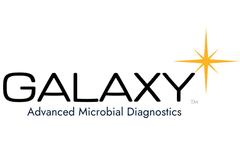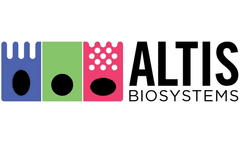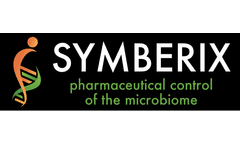Microbiome Array For Research Articles & Analysis
18 articles found
The advent of next-generation sequencing (NGS) has revolutionized the field of microbiome research, particularly through the analysis of 16S rRNA gene sequencing. This technique allows for a comprehensive understanding of microbial communities, providing insights into their composition and functional potential. This article outlines best practices for the bioinformatics analysis of 16S rRNA ...
The term microbiome comes from the Greek word micro which means small and bios meaning life. It is defined as "a characteristic microbial community occupying a reasonable well-defined habitat which has distinct physiochemical properties". Many researchers in the past defined microbiome based on different contexts such as ecological and genetic aspects. However, scientists noted some gaps in these ...
What is metatranscriptomic sequencing? Metatranscriptomic sequencing provides direct access to culturable and non-culturable microbial transcriptome information by large-scale, high-throughput sequencing of transcripts from all microbial communities in specific environmental samples. Metatranscriptomic sequencing offers an opportunity to randomly sequence mRNAs as a unit for understanding the ...
Herb- and plant-based medicines have been used for as long as 60,000 years, with the first written record dating to 7,000 years ago. While these medicines have survived scientific evaluation with varying success, one in four medications currently used has a plant-based origin. One of the most successful medications treats a vector-borne disease. With all this history, why aren’t we ...
Gut microbes are considered "virtual organs" that influence host health and are involved in disease research. The human gut microbiota has a large gene pool, encoding approximately 100-150 times more genes than the human genome, and contains a rich resource of enzymes with the ability to metabolize drugs. The diversity of gut bacteria also affects the mental health of the host. Microbiomes from ...
When you hear about the vaginal microbiome (VMB), your first thought may be the role it plays in stuff like yeast infections or bacterial vaginosis (BV). But with improved research, we’re uncovering more of the VMB’s long-term effects, like its role in a healthy pregnancy and delivery. The complex community of organisms living in your vagina even plays a part in your risk of ...
ByJuno Bio
The vaginal microbiome has a profound impact on pregnancy health - here we dig into the science with an expert You might already be familiar with how the microbes that live in your vagina affect your health, especially when it comes to conditions like yeast infections or bacterial vaginosis (BV). But it’s not just about you - your vaginal microbiome (VMB) can also impact the outcome of ...
ByJuno Bio
Background: Disruption of the microbiome is key to the pathogenesis of recurrent Clostridioides difficile infection (CDI). Place bo-control led trials assessing microbiome therapeutics have demonstrated efficacy in recurrent CDI; hov/ever, long-term safety and efficacy data from rigorously conducted studies of microbiome therapies, including cumulative efficacy in those who received a second dose ...
The Use of Microbiome Sequencing in Cancer Research A growing body of evidence now suggests that human microbial dysbiosis has a crucial role in cancer development and progression. Unlike earlier studies relying on culturing bacteria from the tissue of cancer, high-throughput sequencing methods have enabled genotyping the microbial ecosystem within cancer tissue from hundreds to thousands of ...
Microorganisms and their environment constitute a complex ecosystem, which is an important part of the biodiversity on earth. The microbiome refers to the collection of all microorganisms and their genetic information in a specific environment or ecosystem, and its connotation includes the interaction of microorganisms with their environment and host. Microbiomics is the study of the microbiome, ...
With rapid development in sequencing technology, researchers can better assess the effect of the gut microbiome on human health. Human beings have a symbiotic relationship with the microbiota since birth. The environment, proximity to other humans and animals, diet, genetics, and time changes can all affect the microbial composition of our skin, mouth, and intestines. Compared with other ...
The identification of microbial groups is an important step in understanding the interrelationship of microorganisms in a community. It is done to determine all present microbial taxa and their relative abundance, and as well their phylogenetic relationships. One of the methods used to establish phylogenetic relationships is by sequencing common genes. One of the easiest genes to be sequenced are ...
A large part of bacterial, archaeal, viral, and fungal microbial taxa consists of the human microbiome. While many of these microorganisms are commensal, some are harmful to humans and many are symbiotic. Our livelihoods are strongly intertwined with the microbes we allocate our bodies with, regardless of whether their appearance is advantageous, insignificant, or harmful. Over the past few ...
Microorganisms and their environment constitute a complex ecosystem, which is an important part of the biodiversity on earth. The microbiome refers to the collection of all microorganisms and their genetic information in a specific environment or ecosystem, and its connotation includes the interaction of microorganisms with their environment and host. Microbiomics is the study of the microbiome, ...
Availability of such models is key to progress in compound screening, disease modeling, and microbiome research. Defining a Niche A niche is a multidimensional space of resources and conditions that define where an organism can survive and grow. ...
Nonalcoholic fatty liver disease (NAFLD) is associated with obesity but also found in non-obese individuals. Gut microbiome profiles of 171 Asians with biopsy-proven NAFLD and 31 non-NAFLD controls are analyzed using 16S rRNA sequencing; an independent Western cohort is used for external validation. Subjects are classified into three subgroups according to histological spectra of NAFLD or ...
Durham, NC (April 28, 2020) - A review article published in PNAS highlights Symberix's efforts to understand the role of the human microbiota in drug efficacy and toxicity. Symberix co-founder Matt Redinbo is featured in the article alongside other leaders from the emerging field of “pharmacomicrobiomics” -- the study of mechanisms behind the microbial impact on drug metabolism. ...
Durham, NC (February 3, 2020) - An article in Nature highlights Symberix's efforts to understand the complex relationship between drugs and the microbiome. The paper discusses recent contributions to the emerging field of “pharmacomicrobiomics” -- the study of how microbes impact drug disposition, efficacy, and toxicity. Symberix is developing bacteria-targeted small molecules that ...








